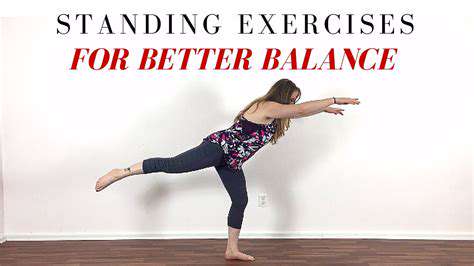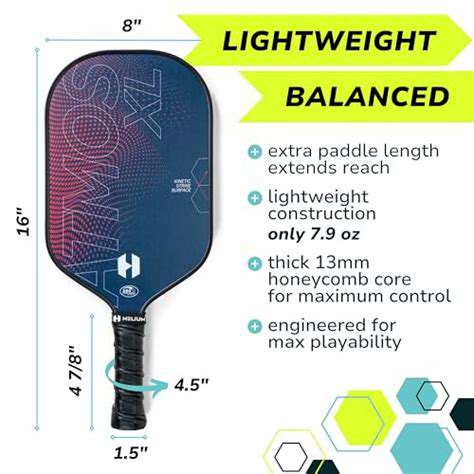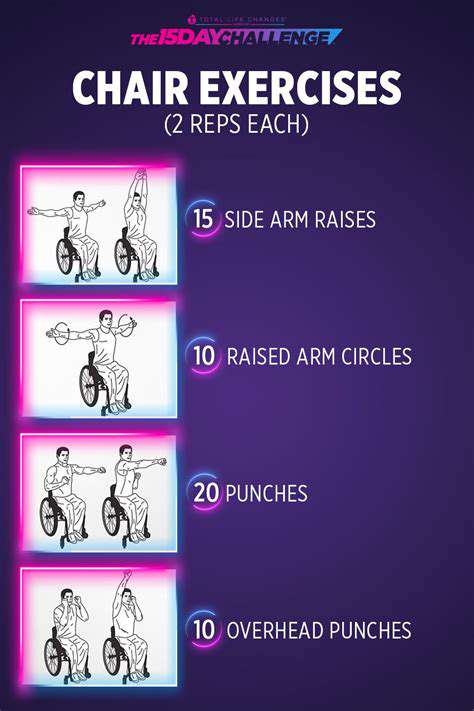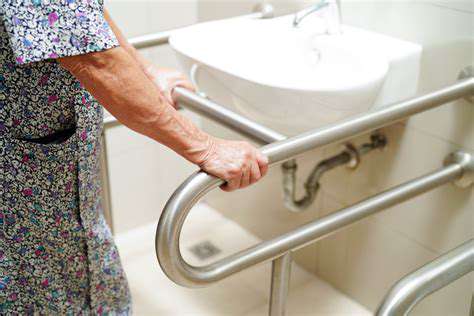Walking Safely with a Walker: Tips and Techniques for Seniors
Getting Ready to Walk
Preparing for Your Walk
Before embarking on your walking journey, it's essential to prepare yourself and your surroundings. Proper preparation minimizes risks and maximizes enjoyment. This involves checking the weather forecast, ensuring the route is accessible and safe, and having appropriate footwear. Adequate hydration is crucial, so be sure to drink plenty of water before, during, and after your walk, especially in warm weather. Having a companion or letting someone know your walking plans is also a good idea, providing a safety net in case of any unforeseen circumstances.
Consider the terrain you'll be traversing. Uneven surfaces or obstacles can pose a significant risk, especially if you're using a walker. Knowing the route beforehand and assessing potential hazards will help you navigate safely and efficiently. Practicing your walking routine with your walker before venturing out on longer distances will ensure a smooth and comfortable experience.
Using Your Walker Effectively
Using a walker correctly is paramount to a safe and enjoyable walk. Ensure the walker's brakes are securely engaged when not in motion. Make sure the walker is stable and won't easily tip over on uneven surfaces. Proper posture is also key, maintaining a balanced position to avoid strain or falls. Adjust the walker's height to accommodate your height and ensure a natural stride, avoiding unnecessary strain on your body.
Knowing how to maneuver your walker around obstacles is important. Steps should be taken in a controlled manner. Learning to navigate stairs or curbs safely with your walker will increase your confidence and independence. Practice these maneuvers in a safe environment before attempting them on your walk. Remember to maintain a steady pace and avoid rushing.
Staying Safe and Comfortable During Your Walk
Throughout your walk, prioritize safety and comfort. Pay attention to your body's signals and take breaks as needed. If you experience any pain or discomfort, stop and rest. Monitoring your surroundings for potential hazards such as uneven pavement, slippery surfaces, or obstacles is critical. Being aware of your surroundings is essential to maintaining safety and preventing falls.
Carrying a cell phone or a personal emergency response system (PERS) can provide added security. If possible, walk with a companion or in a well-lit area. These precautions will significantly reduce risks and enhance the overall safety of your walking experience. Enjoy the fresh air and the sense of accomplishment that comes with each step.
Maintaining Balance and Posture
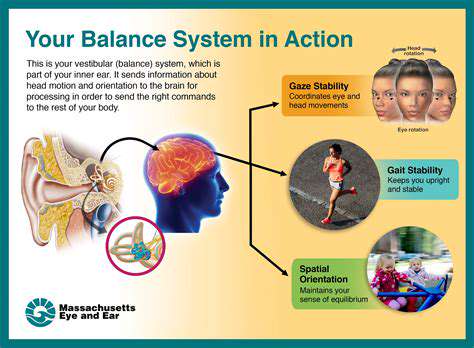
Understanding the Importance of Balance
Maintaining balance and good posture is crucial for overall health and well-being. It directly impacts our ability to perform daily tasks efficiently and safely, from walking and standing to reaching and lifting. Poor balance can lead to falls, injuries, and reduced mobility, impacting our independence and quality of life as we age.
Understanding the complex interplay between our sensory systems, muscles, and nervous system is key to grasping how we maintain equilibrium. This intricate process requires constant adjustments and fine-tuning to counteract the forces acting upon our bodies.
Posture and its Effects on the Body
Good posture isn't just about looking good; it's about optimizing the alignment of our skeletal structure. This proper alignment minimizes stress on our joints, muscles, and ligaments, reducing the risk of pain and injury.
Poor posture, conversely, can lead to chronic pain in the neck, back, and shoulders. It can also contribute to headaches, digestive issues, and even breathing problems. Moreover, it can affect our overall energy levels and mood.
Factors Affecting Balance and Posture
Numerous factors can influence our balance and posture, including age, underlying health conditions, medications, and even environmental factors like uneven surfaces.
Age-related changes, such as decreased muscle mass and strength, diminished proprioception (the ability to sense the position of one's body), and visual changes, can significantly impact balance and posture stability.
Exercises for Improving Balance
Regular exercise plays a vital role in maintaining balance and posture. Simple exercises like standing on one leg, heel-to-toe walks, and chair stands can significantly improve your stability and strength.
Incorporating these exercises into your daily routine can strengthen the muscles that support your posture, reducing the risk of falls and promoting overall well-being.
Posture Assessment and Correction
A posture assessment can identify areas of weakness or misalignment. A qualified professional can provide personalized recommendations to correct postural issues and prevent future problems.
Identifying and addressing these issues early on is crucial for preventing long-term pain and discomfort. Professional guidance can help you develop strategies to improve your posture and balance over time.
The Role of Diet and Nutrition
A balanced diet rich in essential nutrients, including calcium and vitamin D, is vital for maintaining strong bones, crucial for optimal posture and balance. Adequate intake of these nutrients can significantly contribute to the health and strength of your musculoskeletal system.
A diet lacking in essential nutrients can weaken bones, leading to increased risk of fractures and impacting balance. This is particularly important as we age, with calcium and vitamin D playing a crucial role in bone health.
Lifestyle Choices and Balance
Lifestyle choices significantly impact our balance and posture. Maintaining a healthy weight, avoiding prolonged periods of sitting, and regularly engaging in physical activity are all crucial components of a balanced lifestyle.
Prioritizing regular physical activity, including both cardiovascular exercises and strength training, is essential for maintaining muscle strength, improving balance, and preventing age-related decline in posture. This translates to a higher quality of life overall.
Practicing Safe Walking Techniques
Choosing the Right Walker
Selecting the appropriate walker is crucial for maintaining stability and safety while walking. Consider the walker's weight capacity, adjustability for different heights and needs, and overall sturdiness. A well-designed walker with sturdy construction will provide a more secure and comfortable walking experience, minimizing the risk of falls and promoting confidence. Look for features like wide base support, adjustable height, and comfortable handgrips. Proper fitting is essential, and consulting with a physical therapist or healthcare professional can provide valuable guidance in choosing the right walker for your specific needs.
Different types of walkers are available, catering to various needs. Lightweight models may be preferred for individuals who need to maneuver through confined spaces, while heavier-duty walkers offer greater stability for those with more significant balance concerns. Consider factors such as your physical abilities, the terrain you'll be walking on, and any potential obstacles you might encounter when making your choice. Prioritize a walker that provides a secure and comfortable walking experience, promoting confidence and reducing the risk of falls.
Maintaining Balance and Posture
Maintaining balance and proper posture is paramount when using a walker to ensure safe walking. A consistent and upright posture is critical for overall stability and reduces the risk of losing balance. Focus on keeping your back straight and shoulders relaxed. Practice shifting your weight evenly across both feet while using the walker for support. Concentrate on maintaining a centered position within the walker's frame to prevent tipping or losing balance.
Proper foot placement and gait are equally important for maintaining stability. Ensure your feet are positioned firmly on the ground while using the walker. Avoid rushing or taking overly large steps, which can disrupt your balance. Maintain a steady and controlled pace, adjusting your stride to suit the terrain and conditions. Regular practice and mindful awareness of your body's positioning while using the walker will significantly enhance your safety and confidence.
Remember to be mindful of your surroundings. Avoid obstacles, uneven surfaces, and potential hazards. Look ahead and concentrate on where you're placing your feet. This attentive approach to walking will reduce the risk of trips and falls and promote a safe and enjoyable walking experience. If you notice any discomfort or instability, stop and reassess your posture and technique. Making small adjustments can significantly improve your safety and comfort while walking with a walker.


